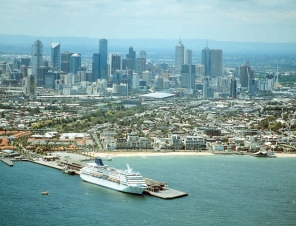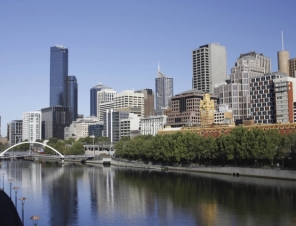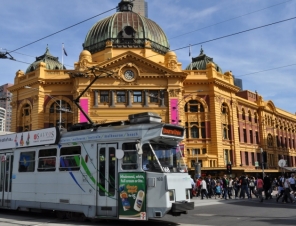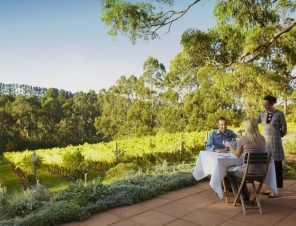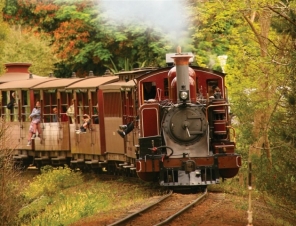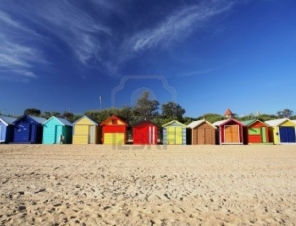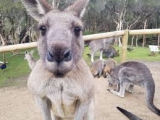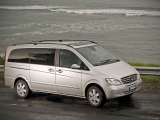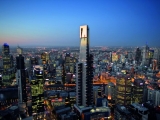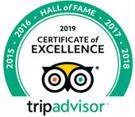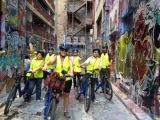
MEL-10 | Melbourne By Bike | 4.50 hrs
Join us for this personal, fun filled tour of Melbourne by a local. See more than you could on foot or by bus and be prepared to fall in love with this beautiful city. Group size limited to 8 persons.
Melbourne is a cosmopolitan city, full of contrasts and claims to be the style capital of Australia. Plenty to see and do both in the city and the surrounding region. Try one of the Gourmet food tours, visit some of the wineries a pleasant drive from the city centre. For those into 'Retail Therapy' you will not be disappointed at the number and quality of the shops and designer boutiques to choose from.
Melbourne is the capital and most populous city in the state of Victoria, and the second most populous city in Australia after Sydney. The metropolis is located on Port Phillip, a large natural bay, with the city centre positioned on the estuary of the Yarra River at the northernmost point of the bay. The metropolis has a population of 4.25 million. Inhabitants of Melbourne are called Melburnians.
Melbourne was founded in 1835 (47 years after the European settlement of Australia) by settlers from Launceston in Van Diemen's Land. It was named by Governor of New South Wales Sir Richard Bourke in 1837, in honour of the British Prime Minister of the day, William Lamb, 2nd Viscount Melbourne. In 1851, it became the capital of the newly created colony of Victoria. During the Victorian gold rush of the 1850s, it was transformed into one of the world's largest and wealthiest cities.
Melbourne is often referred to as Australia's garden city, and the state of Victoria was once known as the garden state. There is an abundance of parks and gardens in Melbourne, many close to the CBD with a variety of common and rare plant species amid landscaped vistas, pedestrian pathways and tree-lined avenues. There are also many parks in the surrounding suburbs of Melbourne, such as in the municipalities of Stonnington, Boroondara and Port Phillip, south east of the central business district.
Melbourne is colder than other mainland Australian state capital cities in the winter. The lowest temperature on record was minus 2.8c (27.0f), on 4 July 1901. However, but snowfalls in the city are rare. More commonly, Melbourne experiences frosts and fog in winter.
Melbourne summers are notable for occasional days of extreme heat. This occurs when the synoptic pattern is conducive to the transportation of very hot air from central Australia over to the south east corner of the continent. The highest temperature recorded in Melbourne city was 46.4c (115.5f), on 7 February 2009.
How far is the cruise terminal from the city centre?
It is 5km to the city centre from the cruise terminal. There are a number of options to get into the centre. Tram Number 109 (about 20 minutes) or bus Number 238 runs to the City (about 25 minutes).
I understand there is a free city tourist trams we can use,where is this?
Melbourne's burgundy and gold City Circle Trams offer free travel to city sights and attractions, with audio commentary on points of interest along the route. The route runs along Flinders Street, Harbour Esplanade, Docklands Drive, La Trobe Street and Spring Street. A complete journey takes around an hour. Trams run in both directions every 12 minutes from 10.00am to 6.00pm Sunday to Wednesday, and 10.00am to 9.00pm Thursday to Saturday (except Christmas Day and Good Friday). The City Circle Tram is not wheelchair accessible.
We want to get to the Puffin Billy Train, how long will this take?
Its about 60 kms so would be an hours drive but will depend on the traffic, there are also tours that go there if you don't want to drive yourself.
How long will it take to get to the airport from the cruise terminal?
The trip is 25km and time depends on the traffic, best to allow 45 to 60 minutes.

 |
|





